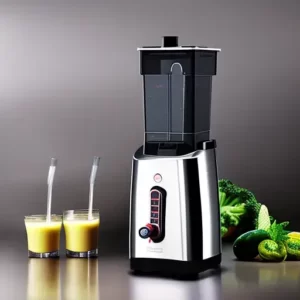Some cakes are just desserts, and some feel almost too special to cut. The baby in bloom cake is definitely the second kind.
It’s the kind of cake that makes people stop and admire it before taking a bite.
With its soft vanilla layers, smooth ivory buttercream, and delicate pastel sugar flowers, it looks like something straight out of a bakery window—but you can absolutely make it at home.
I won’t lie—this cake takes time. But if you love baking, decorating, and creating something truly beautiful, you’ll enjoy every step. The key is getting the details just right.
The cake layers need to be soft and even, the buttercream smooth and perfectly tinted, and the sugar flowers light and realistic.
It’s all about patience and precision, but trust me, when you step back and see the finished cake, it’ll be worth every second.
If you’ve ever wanted to try making a floral cake that looks just as stunning as it tastes, this is the one.
I’ll walk you through everything, from baking to frosting to placing each sugar flower exactly where it belongs. Let’s make something unforgettable.
Table of Contents
ToggleBaby In Bloom Cake Recipe
Ingredients
For The Vanilla Cake
- 3 ½ cups (440g) cake flour
- 2 ½ tsp baking powder
- ½ tsp baking soda
- ½ tsp salt
- 1 cup (225g) unsalted butter, softened
- 2 ½ cups (500g) granulated sugar
- 4 large eggs, room temperature
- 1 tbsp pure vanilla extract
- 1 cup (240ml) whole milk, room temperature
- ½ cup (120ml) buttermilk, room temperature
For The Buttercream Frosting
- 2 cups (450g) unsalted butter, softened
- 6 cups (750g) powdered sugar, sifted
- 2 tbsp heavy cream (or whole milk)
- 1 tbsp vanilla extract
- ¼ tsp salt
- 1 drop ivory gel food coloring
For The Pastel Sugar Flowers
- 500g white gumpaste
- Gel food coloring in blush pink, pale yellow, baby blue, ivory, and soft green
- Edible glue or water
- Cornstarch for dusting
- Peony, daisy, and cherry blossom cutters
- Flower shaping tools: foam pad, ball tool (for petal shaping), small brushes
- Tiny nonpareils or sugar pearls (for realistic flower centers)
Instructions
- Preheat the oven to 350°F (175°C). Grease and line three 8-inch (20cm) round cake pans with parchment.
- In a medium bowl, whisk together cake flour, baking powder, baking soda, and salt.
- In a large bowl, beat the butter and sugar on high speed for 3 minutes until light and fluffy.
- Add eggs one at a time, beating well after each. Stir in vanilla extract.
- Reduce speed to low and alternately add the dry ingredients and the milk + buttermilk, starting and ending with the flour mixture. Mix until just combined—do not overmix.
- Divide the batter evenly between the prepared pans, smoothing the tops. Weigh each pan to ensure equal layers.
- Bake for 30-35 minutes or until a toothpick inserted in the center comes out clean.
- Let cakes cool in the pans for 10 minutes, then turn them out onto a wire rack to cool completely.
- Trim any domed tops for a level, straight cake stack.
For The Buttercream
- Beat butter until smooth and creamy (3 minutes).
- Add powdered sugar, one cup at a time, mixing on low speed.
- Stir in vanilla, salt, and heavy cream.
- Increase speed and whip for 2-3 minutes until light and fluffy.
- Mix in one drop of ivory gel color to match the cake’s subtle, creamy hue.
To Assemble
- Place the first cake layer on a turntable or cake board. Spread a thin layer of buttercream, then stack the second and third layers.
- Apply a crumb coat—a thin buttercream layer to trap crumbs—then chill for 15 minutes.
- Frost the entire cake smoothly. Use an offset spatula for application and a warm bench scraper for a flawless finish. Chill for 30 minutes to set.
For The Sugar Flowers
- Knead small portions of gumpaste with gel food coloring to create soft pastel hues.
- Roll out each color on a cornstarch-dusted surface and use cutters to shape peonies, daisies, and cherry blossoms.
- Place petals on a foam pad and thin the edges with a ball tool for a natural, delicate effect. Slightly curve some petals to mimic real flowers.
- Attach petals with edible glue, forming full blossoms.
- Add sugar pearls or nonpareils to the centers.
- Allow flowers to dry for at least 12 hours until firm.
To Decorate
- Start by arranging the largest flowers (peonies) on the top of the cake.
- Add medium daisies around them.
- Fill gaps with smaller cherry blossoms and blue accent flowers.
- Slightly cascade flowers down one side and secure each flower with a small dot of buttercream or edible glue.

What Makes The Baby In Bloom Cake Soft And Moist?
A soft and moist cake comes down to the right ingredients, mixing technique, and baking method. Every step matters, from choosing the right flour to how long you mix the batter.
- Use cake flour: Cake flour has less protein than all-purpose flour, making the cake lighter and softer. If you don’t have it, you can make a substitute by replacing 2 tablespoons of flour with cornstarch for every cup.
- Don’t overmix the batter: Overmixing develops too much gluten, making the cake dense. Mix just until everything is combined and smooth.
- Use room temperature ingredients: Butter, eggs, and milk blend more easily when they are at room temperature, creating a smooth batter with even texture.
- Add buttermilk or yogurt: These ingredients add moisture and a slight acidity, helping to break down gluten for a softer crumb.
- The right amount of fat and sugar: Butter and sugar help trap air in the batter, making the cake light. Using the right balance ensures the cake stays tender.
- Do not overbake: Baking too long removes too much moisture. Check for doneness by inserting a toothpick—if it comes out with a few crumbs, the cake is done.
- Brush with syrup (optional): If the cake still seems dry, brushing simple syrup (sugar dissolved in water) on each layer before frosting adds extra moisture.
How Do I Prevent My Baby In Bloom Cake From Being Dense Or Dry?
A dense or dry cake usually happens when something goes wrong with the ingredients or baking process. Here’s how to avoid it:
- Measure ingredients correctly: Too much flour makes the cake dry, while too little fat or sugar can make it dense. Use a scale or the spoon-and-level method for accuracy.
- Cream butter and sugar properly: Beat them together until light and fluffy—this adds air to the batter, making the cake rise well.
- Don’t use cold ingredients: Cold butter doesn’t cream well, and cold eggs won’t mix properly, leading to an uneven texture.
- Use the right leavening agents: Baking powder and baking soda help the cake rise. Using too little makes the cake dense, while too much can cause it to rise too quickly and collapse.
- Avoid overbaking: A dry cake is often the result of being left in the oven too long. Start checking a few minutes before the recommended time.
- Use oil for extra moisture (if needed): Butter gives great flavor, but a small amount of oil (like vegetable or canola oil) can help keep the cake soft.
Can I Make This Baby In Bloom Cake In Advance?
Yes, you can make the cake ahead of time, and it will still taste fresh if stored properly. Here’s how to do it without losing quality:
- Baking the cake layers in advance: Bake the cake layers, let them cool completely, and wrap them tightly in plastic wrap. Store them at room temperature for up to 24 hours or refrigerate for up to 3 days. For longer storage, freeze them for up to 2 months—just thaw at room temperature before frosting.
- Making the buttercream early: Buttercream can be made 3-4 days ahead and stored in the fridge. When ready to use, let it sit at room temperature for 30 minutes, then whip it again to bring back the fluffy texture.
- Assembling in advance: You can fully assemble and decorate the cake a day ahead. Keep it in the fridge in a cake box or airtight container. Let it sit out for 30-60 minutes before serving so the buttercream softens.
What’s The Best Way To Apply Buttercream For A Clean, Professional Look?
A smooth, professional buttercream finish makes any cake look polished and elegant. The right technique and tools can help you get sharp edges and an even surface.
- Start with a crumb coat: Spread a thin layer of buttercream over the cake to trap loose crumbs. Chill for 15–30 minutes until firm before applying the final layer.
- Use an offset spatula and bench scraper: An offset spatula helps spread the buttercream smoothly, while a bench scraper is perfect for smoothing the sides.
- Apply more buttercream than needed: It’s easier to remove extra frosting than to fix gaps. Add a thick, even layer before scraping off the excess.
- Keep the spatula warm: Dip it in hot water, wipe it dry, and then smooth the buttercream. The warmth helps create a flawless finish.
- Turn the cake while smoothing: Place the cake on a turntable and spin it slowly while using a bench scraper to smooth the sides evenly.
- Chill between steps: If the buttercream becomes too soft while decorating, refrigerate the cake for 10–15 minutes to firm it up before continuing.
- Fix any imperfections: After smoothing, use a clean spatula to touch up any uneven spots. A final chill before serving keeps the edges sharp.

How Do I Fix Buttercream That’s Too Soft Or Too Stiff?
Buttercream texture matters—a frosting that’s too soft won’t hold its shape, while one that’s too stiff is hard to spread. Here’s how to fix both issues:
If The Buttercream Is Too Soft:
- Chill it: Place the buttercream in the fridge for 10–15 minutes to firm up before using.
- Add powdered sugar: If the buttercream is still too runny, mix in 1–2 tablespoons of powdered sugar at a time until it thickens.
- Use less liquid: If you added too much milk or cream, mix in a little more butter or sugar to rebalance the consistency.
If The Buttercream Is Too Stiff:
- Add a small amount of liquid: Mix in 1 teaspoon of milk or cream at a time until it reaches the right consistency.
- Let it sit at room temperature: If the buttercream is too firm from being in the fridge, let it soften for 15–20 minutes before mixing again.
- Beat it again: Sometimes, overchilling makes buttercream hard. Beating it with a mixer for a minute can bring back a smooth texture.
Can I Use A Different Frosting Instead Of Buttercream?
Yes, if you don’t want to use buttercream, there are other frosting options that can still give you a delicious and smooth finish.
- Whipped cream frosting: Light, airy, and not too sweet. Works best for simple cakes but isn’t as stable for heavy decorations.
- Cream cheese frosting: Adds a tangy flavor that pairs well with vanilla or carrot cake. Softer than buttercream, so it may not hold intricate designs well.
- Ganache: Made from chocolate and cream, ganache creates a rich and glossy finish. When whipped, it can also be used as a spreadable frosting.
- Swiss meringue buttercream: Smoother and less sweet than traditional buttercream, but requires more steps to make.
- Fondant: If you prefer a completely smooth and firm cake, fondant can be rolled out and placed over a thin buttercream layer.
What Type Of Sugar Paste Is Best For Making Flowers?
The right sugar paste makes a huge difference when creating delicate, realistic flowers. Not all pastes are the same, and using the wrong one can make the flowers too soft or too fragile.
- Gum paste: This is the best choice for sugar flowers. It dries hard, holds fine details, and keeps its shape without wilting.
- Fondant with Tylose powder: If you don’t have gum paste, you can mix Tylose powder into fondant to make it firmer and dry faster.
- Modeling chocolate: This works well for some flowers, but it stays softer and doesn’t dry as hard as gum paste.
- Pastillage: A lesser-known option that dries even harder than gum paste, making it great for flowers that need extra strength.
How Do I Color Sugar Paste Without Making It Too Sticky?
Adding color to sugar paste is simple, but too much liquid can make it sticky and hard to work with. Here’s how to do it the right way:
- Use gel food coloring: Liquid food coloring adds too much moisture, while gel coloring is more concentrated and won’t make the paste sticky.
- Apply color in small amounts: Add a tiny bit at a time and knead it in until the color is even. You can always add more if needed.
- Dust hands with cornstarch: If the paste starts sticking to your hands, a little cornstarch will help absorb extra moisture.
- Let it rest before using: After coloring, wrap the sugar paste in plastic wrap and let it sit for 10–15 minutes to allow the color to settle.
- Use powdered colors for shading: For soft, natural-looking petals, dust the edges with powdered food color instead of mixing it into the paste.
What Tools Do I Need To Shape Realistic Flowers?
Making sugar flowers requires a few special tools to get the right shape, texture, and structure.
- Flower cutters: These come in different petal shapes to help create various flowers.
- Veining tools: These add realistic textures to the petals, making them look more natural.
- Foam pad: A soft surface that helps shape the petals without breaking them.
- Ball tool: Used to thin and curl the edges of petals for a delicate look.
- Dresden tool: Helps add fine details like creases and lines.
- Wire and floral tape: Used for making wired flowers that can be arranged into bouquets.
- Edible glue or egg whites: Helps attach petals together securely.
How Long Do Sugar Flowers Take To Dry?
Sugar flowers need time to dry properly so they hold their shape. The drying time depends on the thickness of the petals, the type of paste, and the humidity.
- Thin petals: Can dry in 6–12 hours if placed in a dry, cool area.
- Thicker or wired flowers: May take 24–48 hours to fully set.
- High humidity: Can slow drying time, so placing the flowers near a fan or in a room with good air circulation helps.
- Fast-drying trick: A food dehydrator or an oven set to the lowest temperature can speed up the process.
Can I Make The Flowers Ahead Of Time?
Yes, making sugar flowers ahead of time is actually recommended. Since they dry hard, they can be stored for weeks or even months.
- Make them at least a week in advance: This gives them enough time to dry fully before decorating.
- Store in a dry place: Keep them in an airtight container with silica gel packs or dry rice to absorb moisture.
- Avoid direct sunlight: Sunlight can cause the colors to fade over time.
- Handle with care: Dried sugar flowers are fragile, so store them in a single layer with soft padding.

How Do I Store Baby In Bloom Cake?
Proper storage keeps the cake fresh and prevents the decorations from getting damaged.
- Short-term storage (1–2 days): Keep the cake in an airtight container at room temperature if the weather is cool. If it’s warm, refrigerate it to prevent the buttercream from melting.
- Longer storage (3–5 days): Refrigerate the cake in a cake box or an airtight container to protect it from drying out.
- If storing with sugar flowers: The fridge can cause condensation, making the flowers soft. It’s best to add the flowers just before serving if possible.
- Freezing the cake: The cake can be frozen without decorations. Wrap it well in plastic wrap and store it in an airtight container for up to 2 months. Thaw in the fridge overnight before bringing it to room temperature.
What’s The Best Way To Transport This Cake Without Ruining The Decorations?
Transporting a decorated cake requires extra care to prevent smudging, shifting, or breaking delicate sugar flowers.
- Use a sturdy cake box: Choose a box slightly larger than the cake to avoid pressing against the decorations.
- Chill the cake before transport: A cold cake is more stable, so refrigerate it for 30–60 minutes before moving it.
- Place the cake on a non-slip mat: This prevents the cake from sliding in the car.
- Drive carefully: Avoid sudden stops and sharp turns. If possible, place the cake on a flat surface rather than on a seat.
- Bring extra decorations: Carry extra buttercream, a spatula, and a few sugar flowers in case anything needs fixing upon arrival.











